Whispers of the Past: Uncovering Colombo’s Secrets, One Story at a Time
The Old Dutch Hospital: From Healing to Hospitality
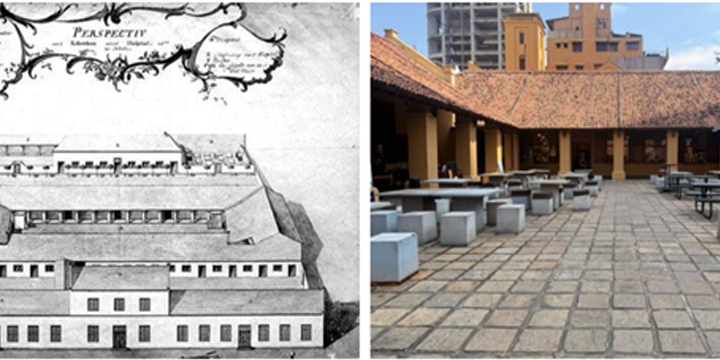
Dating back to the late 17th century, the Old Dutch Hospital is one of Colombo’s oldest surviving buildings. Originally a hospital for Dutch East India Company officers and sailors, this striking structure was built to withstand the tropics with thick walls, high ceilings, and a cool central courtyard.
Today, it’s more than just a historical site—it’s a vibrant hub of life. You can enjoy a plate of iconic Sri Lankan crabs, indulge in fusion dishes or simply sit under the shady colonnades with a cup of Ceylon tea and watch the world go by. Take a closer look, and you’ll spot original details—the wooden window latches, teak beams, and arched windows that have stood the test of time.
The Colombo Clock Tower: The City’s Timeless Keeper
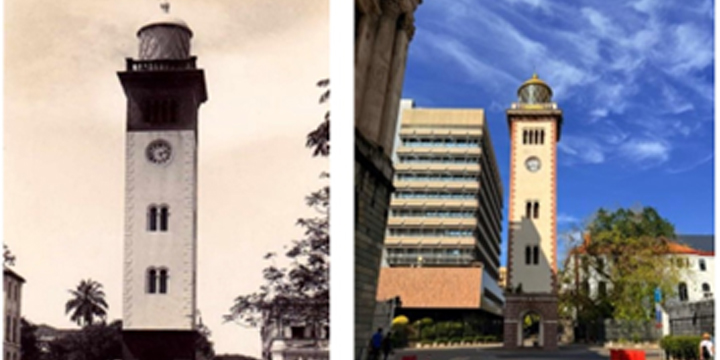
Standing tall at the entrance to Chatham Street, the Colombo Clock Tower wasn’t always just a clock—it was once a lighthouse guiding ships into the harbor. Built in 1857, it doubled as a navigational beacon until Colombo’s urban expansion blocked its view from the sea.
Its clock was added in 1860, and remarkably, the original mechanism still works to this day. As you stand beneath its shadow, you can almost hear the echo of its maritime history amid the modern cityscape.
The Echelon Barracks: From Soldiers to Skyscrapers
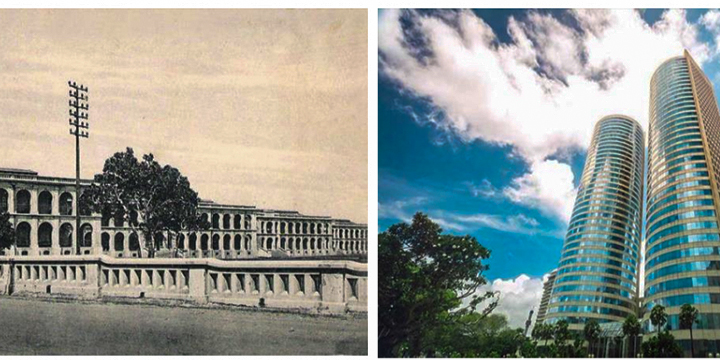
Where the towering World Trade Center now stands, there was once a sprawling military compound known as the Echelon Barracks. Built in the late 19th century by the British, these two-story barracks formed a square around a parade ground, housing soldiers who maintained control over the capital.
Post-independence, the barracks became the Ceylon Army’s headquarters until they were demolished in the 1970s. Today, Echelon Square has transformed into a bustling commercial hub, home to the World Trade Center and luxury hotels like the Hilton Colombo. Yet, the area still holds the echoes of military parades and colonial command.
The Cargills Building: A Storehouse of Stories
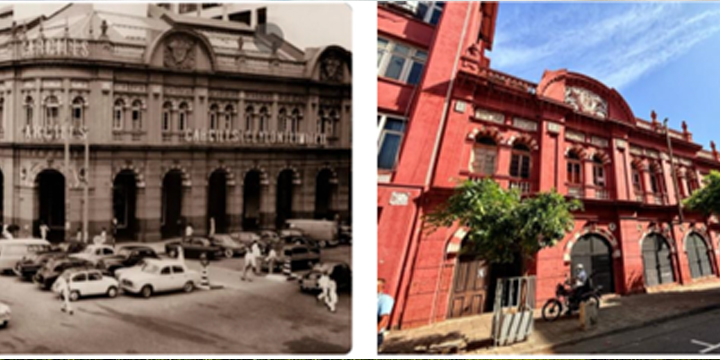
The Cargills Building on York Street is a beacon of Colombo’s commercial history. Constructed in 1906, this iconic red-brick structure blends Neo-Renaissance and Victorian styles, with arched windows and ornate facades that are hard to miss.
But long before it became a bustling department store, this site had an even older story. In the Dutch period, it was the residence of Captain Pieter Sluysken, the former Dutch military commander of Galle. After the British took over, it briefly served as the home of Sir Frederick North, Sri Lanka’s first British Governor, before he moved to Hulftsdorp.
Today, the building is still synonymous with luxury and history, though it now primarily serves as the Cargills corporate headquarters. Inside, you’ll find relics from the past, such as the foundation stone dated 1684 and a wooden statue of Minerva, the Roman goddess of wisdom, standing as symbols of the site’s enduring legacy.
The Old Parliament Building: The Powerhouse of Politics
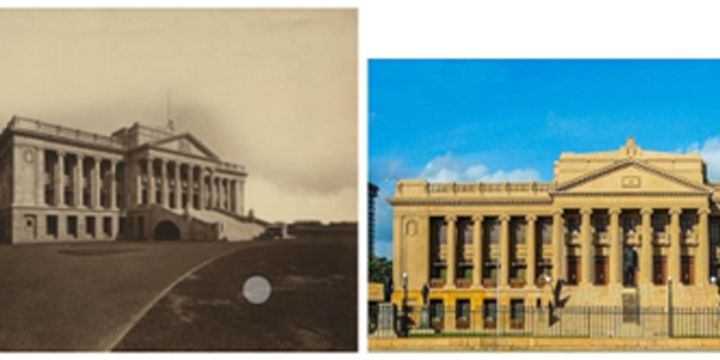
Situated near the harbor, the Old Parliament Building is an architectural marvel built in 1930. With its neoclassical columns and imposing design, it served as the home of the legislative council during the British period. Now the Presidential Secretariat, the building remains a symbol of power and political history, as well as one of the finest example of British colonial architecture in Sri Lanka.
The President’s House: A Presidential Legacy
Once known as the Queen’s House, the President’s House has been the official residence of Sri Lanka’s governors and presidents since 1804. Hidden behind large gates, this grand colonial mansion has witnessed some of the nation’s most pivotal moments. It’s a silent observer of history, blending stately elegance with a sense of enduring mystery.
The Central Point Building: A Chandelier of Grandeur
Just steps away from the Clock Tower is the Central Point Building, a stunning example of Greco-Roman architecture. Inside, you’ll find South Asia’s largest chandelier, an awe-inspiring centerpiece hanging beneath a grand circular dome. This building, once a financial institution, now houses the Economic History Museum, offering a deep dive into Sri Lanka’s economic evolution. The chandelier itself is a dazzling reminder of the grandeur of Colombo’s colonial past.
The Grand Oriental Hotel: The Jewel of the Harbor
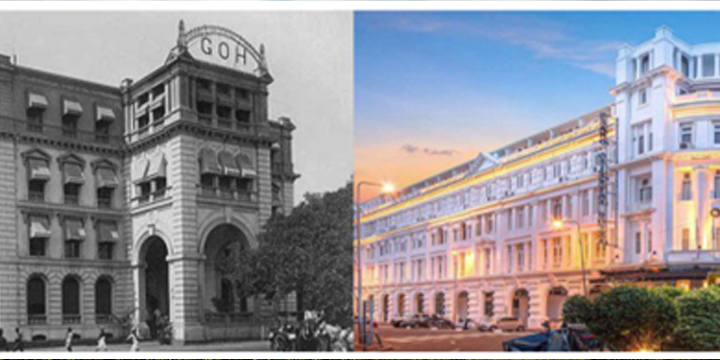
A short walk from the Fort Railway Station leads you to the Grand Oriental Hotel (GOH)—a building that has seen the world pass by since its establishment in 1875. Originally constructed as barracks for British soldiers, it was transformed into a luxury hotel, offering panoramic views of the Colombo harbor.
In its heyday, the GOH was the epitome of elegance, welcoming guests from across the globe. Legends say that the iconic Russian author Anton Chekhov once stayed here, taking inspiration from the bustling harbor below. The hotel’s grand staircase, vintage decor, and historic charm transport you to an era of opulence. And whether you’re enjoying high tea or simply soaking in the view, the GOH reminds you that some stories are meant to be experienced, not just told.
Why Colombo’s History Matters
Exploring Colombo’s colonial quarter becomes an unforgettable journey when seen through the eyes of someone who truly knows its soul. Mark Forbes, with his deep love for history and architecture, takes you beyond the facades of old buildings and into the heart of the stories they hold.
He paints vivid scenes of life during the colonial era, weaving together tales of those who walked these streets before us—traders, soldiers, and dreamers. Along the way, he stops at bustling markets and hidden corners, connecting the past to the present in ways that feel immediate and real. Whether it’s pointing out the intricate craftsmanship of an old window latch or unraveling the significance of a quiet war memorial, Mark’s insights make Colombo’s history come alive in unexpected and memorable ways.
Walking through these landmarks isn’t just a stroll through history—it’s a chance to witness how a city evolves, how old stories shape new beginnings, and how heritage continues to thrive amid modernity. From the Dutch Hospital’s quiet courtyards to the Clock Tower’s stoic face, every corner holds a tale of resilience and transformation.
So, whether you’re a history lover, an architecture enthusiast, or simply a curious wanderer, Colombo’s Fort area offers more than sights—it offers whispers of the past, calling out for those who are ready to listen

How to make this experience a part of your itinerary?
Our vision for our blog is to build an invaluable resource for independent inquisitive travelers wanting to travel to Sri Lanka in a way that goes beyond the conventional and takes people further and deeper both physically and emotionally. It’s about having a fuller, richer, more meaningful trip. We also want to be a practical resource. Every article is ‘actionable’, you are able to make it part of your itinerary in some way. For tips on how to make any of these tips part of your journey send us an enquiry
